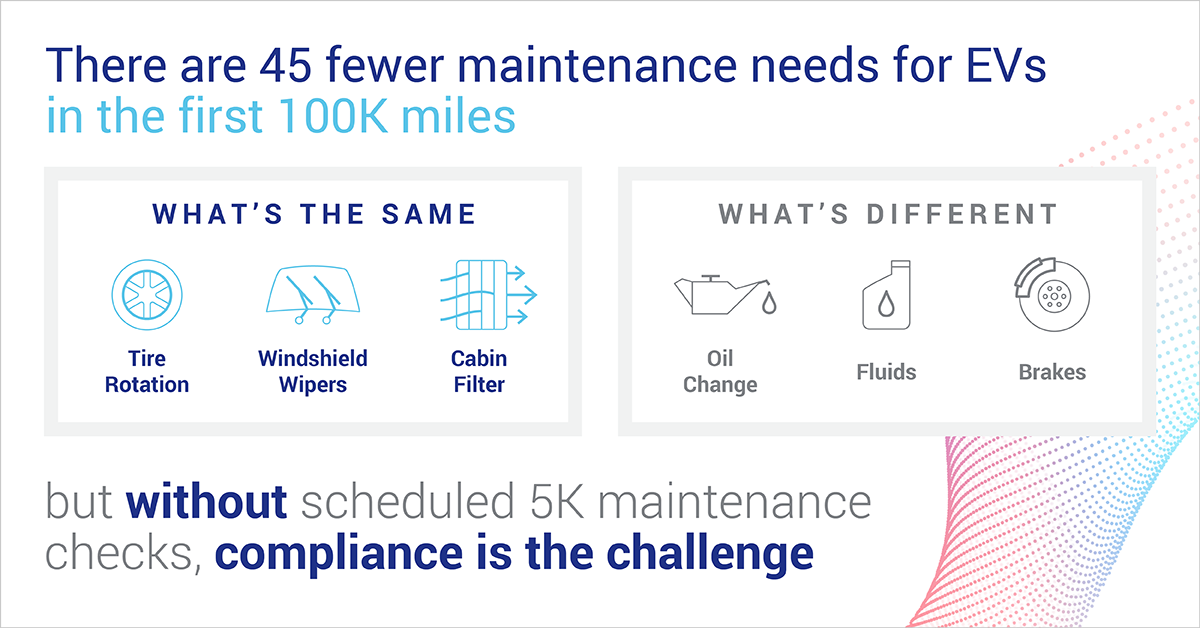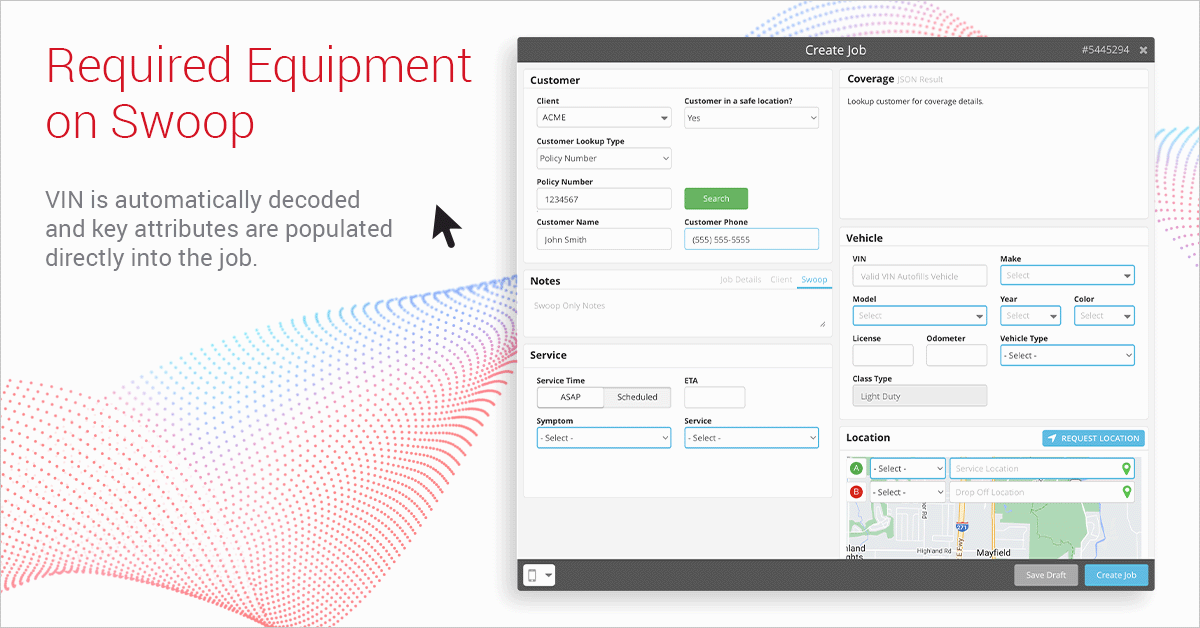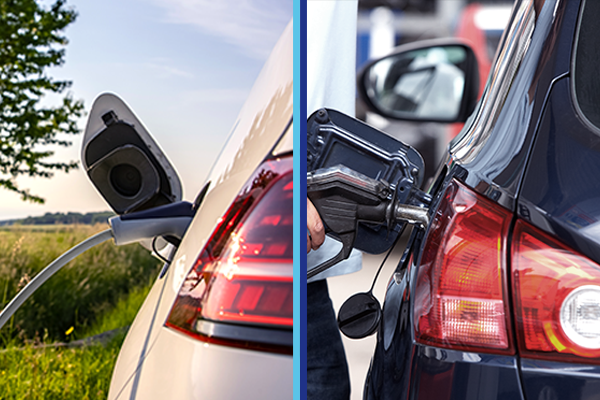When it comes to supporting customers with their electric vehicles, the what, why and how are all different. As a brand selling or supporting these customers, understanding these nuances and the changes they require will be critical to your customer experience and long term success. Here’s the rundown:
New technology can lead to new failure modes and some unpleasant surprises
Unlike internal combustion engines (ICE), where many events can be resolved roadside, more than 85% of electric vehicle events require a tow. These tows may require specialized equipment and expertise to avoid damage and risk to the vehicle. In fact, flatbed tows are 3X more common for electric vehicles. Specific equipment requirements can lead to delays in service. In addition, the influx of these new models and the structural differences associated with them, can be challenging or confusing for service providers.
Also, most electric vehicles don’t have a spare tire. This complicates the flat tire experience, which is the most requested service for electric vehicles. The shock and frustration associated with the “no-spare” experience can be particularly damaging to brand perception.
Finally, there’s every EV driver’s biggest fear - running out of charge. It happens, accounting for 1% of EV roadside events. In most cases, drivers are towed to the nearest charging station or home. The wait time for the tow, plus the charge, extends this event time as compared to running out gas, which can be solved roadside.
As a result, electric vehicle roadside events often take about 18% (~12 min) longer to resolve and customer experience suffers, with the NPS dropping by nearly 20 points on average.
When it comes to maintenance, EVs require less effort but may need additional support to avoid disruptions
This change in the breakdown of service events is fueled in part by mechanical and system changes, but maintenance also plays a significant factor. With no combustion engine, standard maintenance like oil changes and air filter replacements are not needed. EVs are also easier on the brakes because of regenerative braking.
For the first 100K miles of ownership both EV and ICE vehicles:
- Tire rotation is required about 10-15 times
- Windshield wipers will need to be replaced 6-7 times
- The cabin filter will need to be replaced 3-4 times.
But for combustion engines, there will also be another 45 maintenance needs covering everything from oil changes, to fluids, to brakes.

While it is clear that EVs are easier to maintain, the challenge than becomes compliance. Most ICE owners don’t make a special appointment to rotate their tires. In fact, most of the maintenance needs can be bundled with their oil changes every 5K miles. This creates a natural point for an expert to take a look at their vehicle, top off fluids and give the vehicle a once over. With electric vehicles, there are less maintenance needs but they may require the customer to be more attentive. Most electric vehicle owners assume that there are no maintenance needs and are likely to overlook these requirements which could lead to disruptions, like flat tires.
Different types of vehicles need different types of support
Given that disruptions with electric vehicles end up more complex in terms of support, time and the unfortunate (and brand-damaging) surprises, it is critical to bring new types of service and support.
1. EnsurE the right equipment
The VIN is the key to critical vehicle detail which can be decoded and used to determine the required equipment based on symptom and the vehicle.

2. Empower providers with up to date EV product information
Our free service provider training resource, Agero Blueprint, has hundreds of pieces of content, with 85 specific to EVs. We continue to expand this resource, with more than 30 new pieces currently in development. We regularly partner directly with OEMs to get the most up to date information and distribute this to our providers.

3. New Services to support new Needs
In addition, we are innovating the EV experience with new services to match these new needs. Through innovative partnerships and new services, there is an opportunity to deliver a mobile charge and get EV customers on their way without requiring a tow. In addition, streamlining tire replacement by delivering and installing tires can reduce the brand-damaging shock of the no-spare experience.
4. Build on experience
At Agero, we’ve been supporting EVs for more than a decade, across hundreds of thousands of customers and 1000s of configurations. We will continue to leverage our experience and our innovative services to ensure that your investment in electric vehicles is fully charged.
Learn more about our configurable collection of electric vehicle services and how we can help support your EV adoption.





 Macklin Wrixon leads the Automotive Product Strategy team at Agero. As Senior Product Strategist, Mac oversees key growth initiatives to support the changing automotive landscape, including electric and connected vehicles. He brings a deep background in program management and analytics in the mobility space from his time at Tesla, Lyft and multiple high growth startups. Mac is based in the San Francisco Bay area and enjoys running, hockey, and spending time with friends & family. He holds a BA in International Business and Economics from Boston University.
Macklin Wrixon leads the Automotive Product Strategy team at Agero. As Senior Product Strategist, Mac oversees key growth initiatives to support the changing automotive landscape, including electric and connected vehicles. He brings a deep background in program management and analytics in the mobility space from his time at Tesla, Lyft and multiple high growth startups. Mac is based in the San Francisco Bay area and enjoys running, hockey, and spending time with friends & family. He holds a BA in International Business and Economics from Boston University.